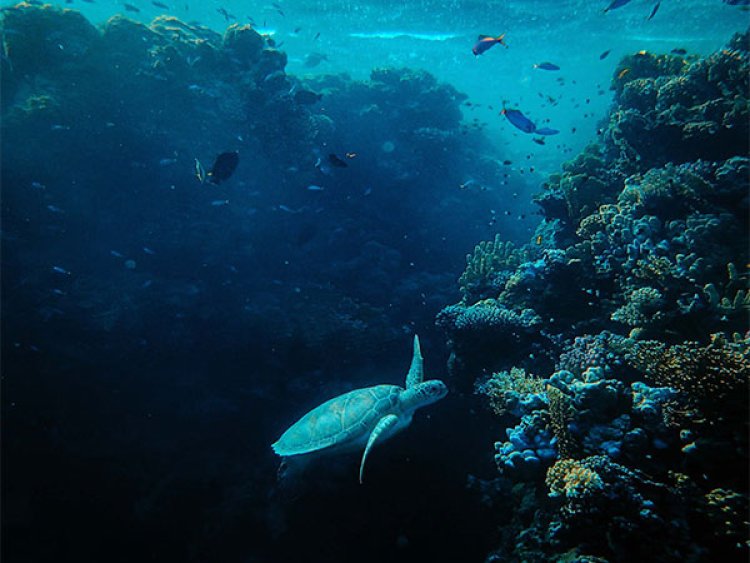Tree reefs can help revive aquatic life in waters: Study

Washington, US: Researchers have demonstrated that sinking fruit trees that have been cut down into the sea is an inexpensive and efficient approach to generating new reefs and increasing the variety and number of marine life in the area.
The Wadden Sea, a UNESCO World Heritage Site and home to the world's biggest tidal flats system, was the site of the study, which was published in Frontiers in Marine Science.
“Here we show that native marine biodiversity can be restored in a highly degraded ecosystem like the Dutch Wadden Sea by using trees as reefs,” said Jon Dickson, the study's lead author and a PhD candidate at the Royal Netherlands Institute for Sea Research.
“Before humans domesticated the landscape with agriculture, logging, and river controls, trees fell into rivers in large numbers and were washed out to sea. We know that such sunken wood has been present in marine ecosystems since the Jurassic, providing a home, shelter, and food for marine animals.”
In April 2022, Dickson and colleagues used 192 dead pear trees to build 32 pyramid-shaped constructions, which were then shipped to open waters between the Dutch barrier islands of Texel and Vlieland. At four different locations, the 'tree-reefs' there were anchored in concrete feet and sunk to the supple sea bottom, at a depth of about three to four metres.
Four months later, they were briefly loaded onto a ship so that the scientists could count the several species of sessile organisms that were on them, including polyps, algae, and shellfish.
They were replaced on the ocean floor and left there for an extra two months so that greater biodiversity could develop. Then, within each reef block and close-by control site, three fish traps were lowered and later recovered after 24 hours. Before being released uninjured, all fish and crustaceans in the traps were measured, counted, and their species identified.
“Within six months, the tree reefs were covered in a profusion of sessile animals and algae, and home to more fish than surrounding control areas,” said Dickson.
The researchers discovered a total of 15 kinds of sessile creatures, mostly barnacles and hydroid polyps but also including bryozoa, sea grapes, sea lettuce, and sea stars. Each of these taxa tended to be expert in a particular range of heights above the sea's surface.
Six species of fish (including whiting-pout, common goby, and European eel) and four types of crustaceans were taken in tree-reef areas, whereas only two species of fish and five types of crustaceans were caught in control areas, which were located around 200 metres away. In the tree-reef areas, abundance was also higher: for instance, 5.1 times as many individuals of the dominant species, five-bearded rocklings, were trapped there as in control sites.
“Current findings highlight that initial colonization of natural tree-reefs is rapid and suggest that recovery of communities associated with may be possible by active restoration,” concluded the authors.
“Since we have done our experiment only in one sea, we don’t yet know how tree reefs would perform off the coast of other continents. Also, how long will they function as reefs as they biodegrade? What species will live in, on, and around them in the longer term? These are questions we need to answer,” said Dickson.















































